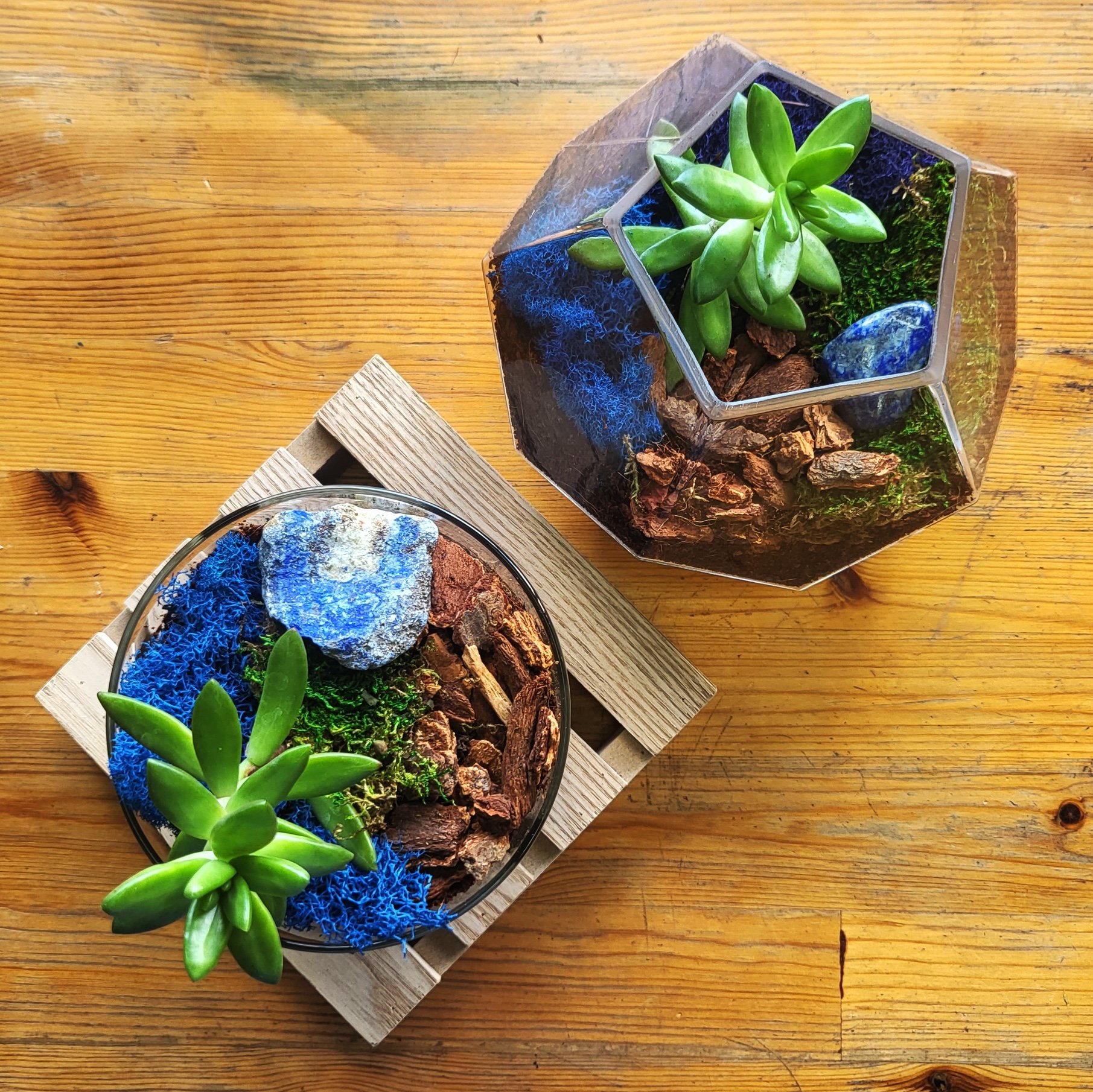Ina’s Crystal Corner: Lapis Lazuli
Welcome back to Ina’s Crystal Corner, this month we’re covering one of my favorite crystals of all time: Lapis Lazuli. This crystal is a favorite of mine not just because of the uses it has in my spiritual practice and gardening, but also the long history behind it. Lapis has been used in artifacts dating as far back as the 7th millennium BC in the Indus Valley region in Northeast Afghanistan (which is still one of the main sources of the stone today). In ancient Mesopotamia, the Akkadians, Assyrians, and Babylonians used Lapis for seals and jewelry. Its popularity is evident in an abundance of literature, including the Epic of Gildamesh (one of the oldest known pieces of literature), which mentions the stone several times. Later it was used in interior furnishings and finishing buildings. You can find Lapis Lazuli used in two columns framing the main iconostasis of Saint Isaac's Cathedral in Saint Petersburg (the others in green are malachite).
Tumbled Lapis Lazuli with Coppertone Sedum in a Geometric Terrarium
Eventually, Lapis was used to make one of my favorite paint colors, ultramarine blue, by grinding the pigment and mixing it with a binder such as linseed oil. During the Middle Ages and the Renaissance, it was the most expensive pigment one could buy, more expensive than even gold. You’ll recognize this beautiful blue color in many Renaissance and Baroque works. Take for instance, the headscarf in Vermeer’s “Girl with a Pearl Earring” or the bright sky in Titian’s “Bacchus and Ariadne”, or better yet Michelangelo’s Sistine Chapel. Over the years, Lapis became tied with many deities and religious figures. In the Ancient World, it was commonly associated with the Mesopotamian Goddess of love, war, and fertility: Inanna. It was also thought to help ward off the “evil eye” and draw in good karma. Later Lapis was regarded as the stone of the Virgin Mary, a connection that remains to this day as she is often portrayed in ultramarine blue in her iconography.
Raw Lapis Lazuli with Coppertone Sedum in a Roman Cup Terrarium
Because of its connection to the throat and third eye chakras, Lapis is thought to bring clarity, wisdom, and improved communication to those who use the stone. Other connections to wisdom and knowledge include Western astrology associations with Sagittarius (happy birthday season!) and Saturn (the planet of responsibility). In plants and gardening, Lapis is thought to absorb negative energy and promote plant sustainability!



